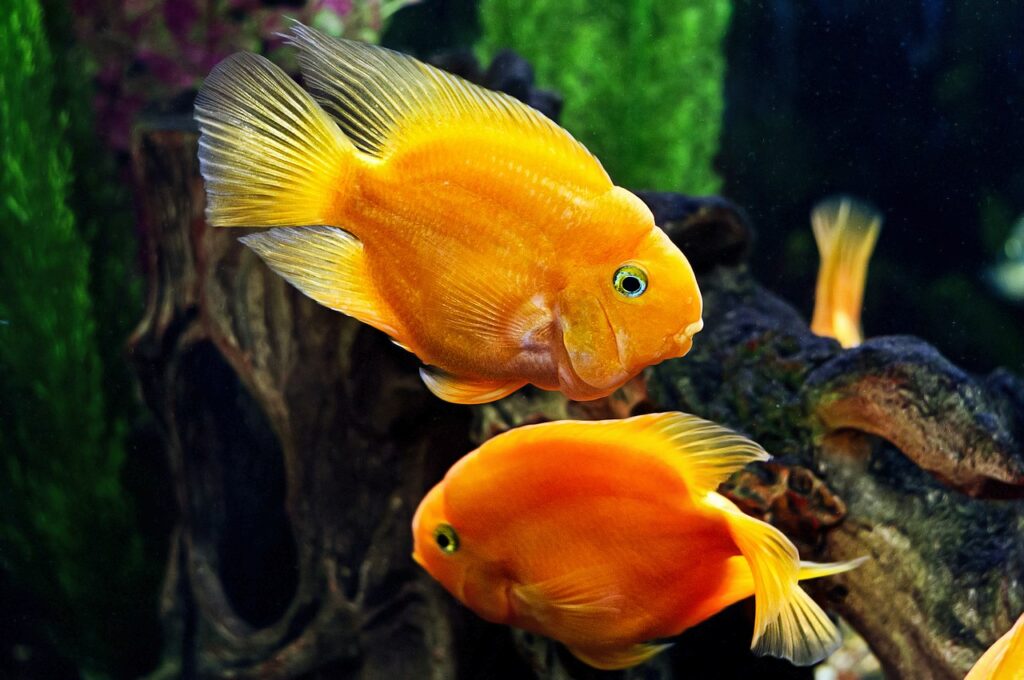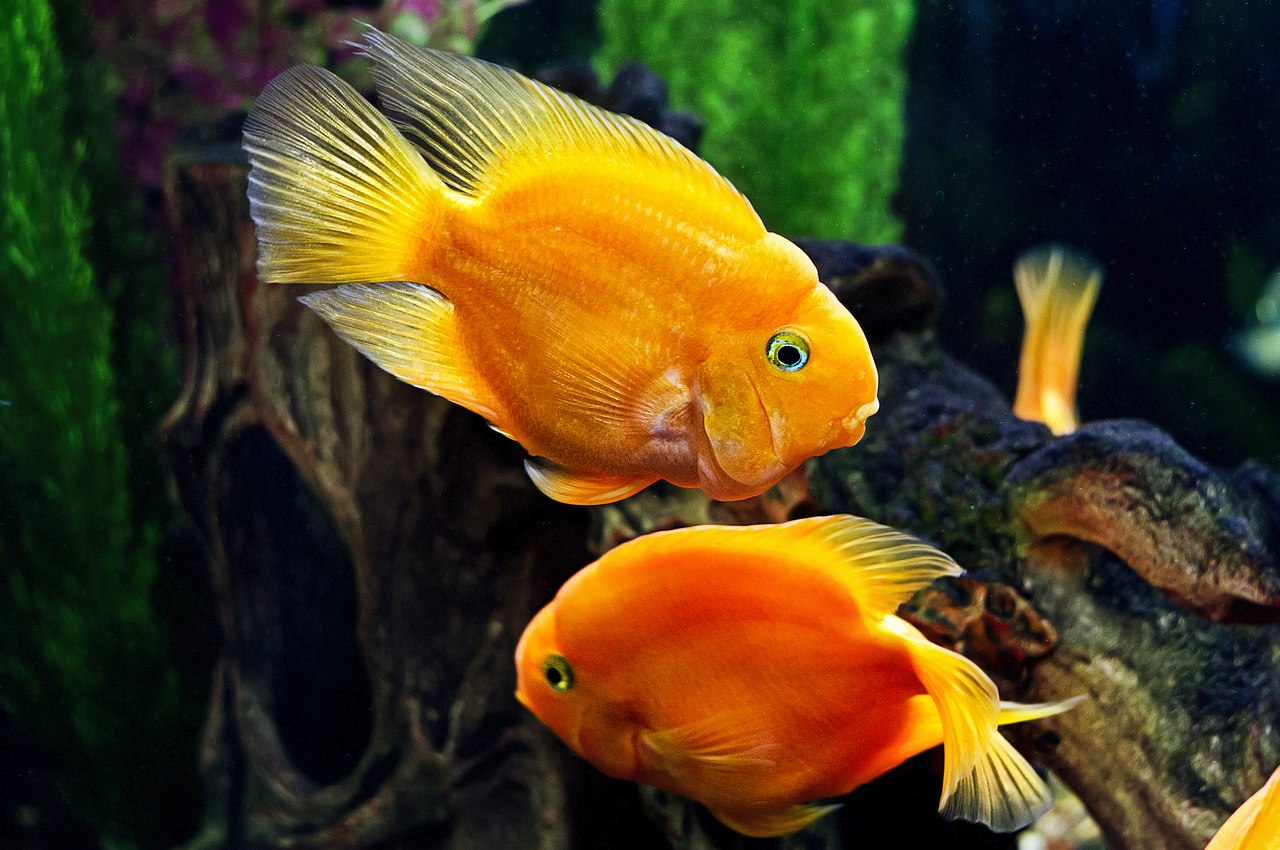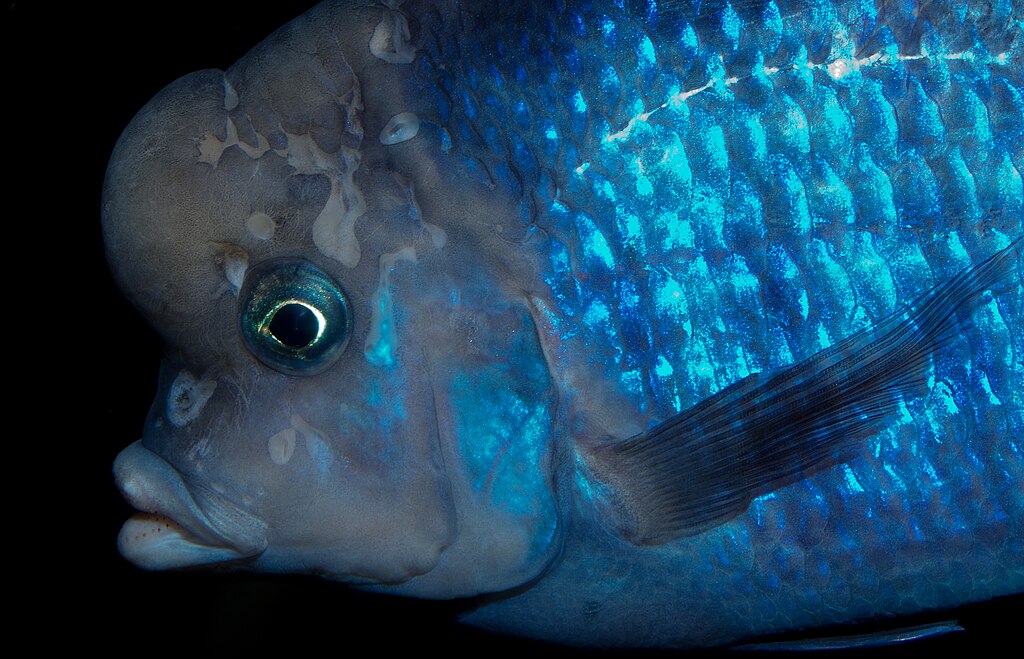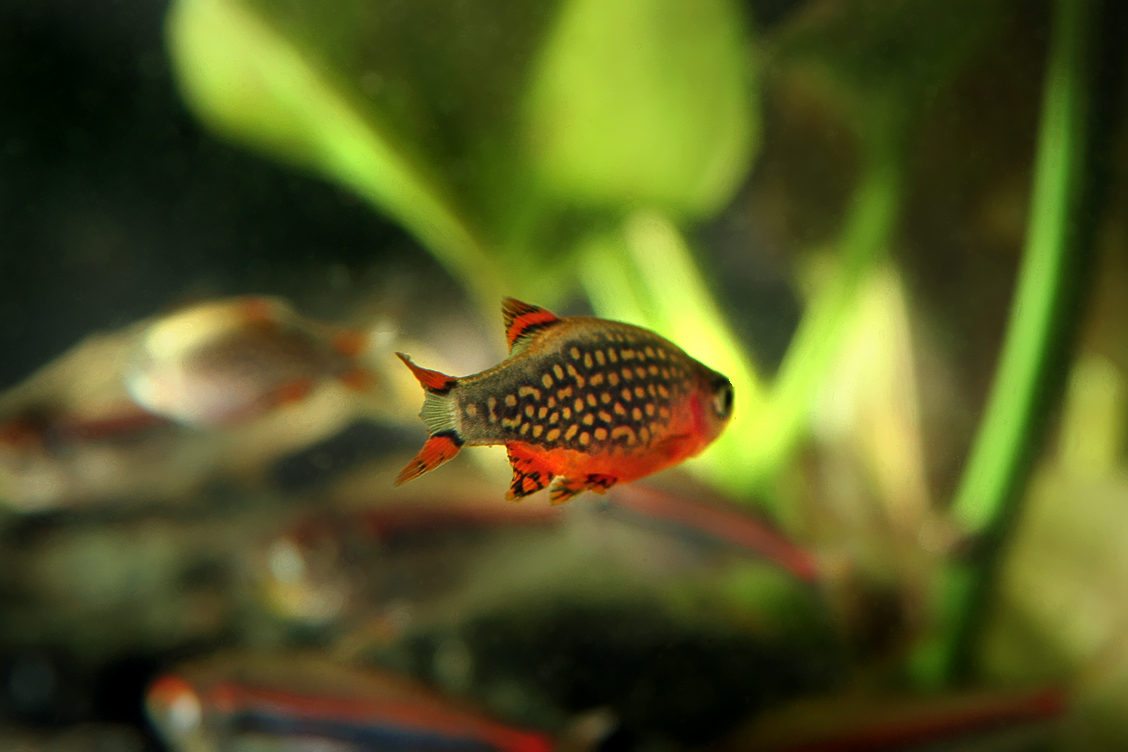The Blood Parrot Cichlid is truly remarkable in the realm of freshwater aquarium fish, captivating enthusiasts with its breathtaking colors and fascinating hybrid traits. This aquarium sensation, which hails from the Cichlidae family, is a cross between the Midas Cichlid and the Redhead Cichlid. With an array of colors ranging from bright orange to unique shades of blue and purple, it’s a true visual treat.
Table of Contents
Surprisingly, the Blood Parrot Cichlid isn’t a rare find. Their widespread availability is a testament to their popularity among aquarium enthusiasts. Although there are various options available, some of the most desirable ones are the “King Kong” cigars, well-known for their robust body, and the “Love Heart” cigars, which are adored for their charming, heart-shaped appearance.
Unlike their wild relatives, these cichlids aren’t found naturally in any habitat. Thanks to meticulous breeding in controlled aquarium environments, they owe their very existence. Typically mid-dwelling, they can maneuver through various levels of the tank. As for their diet, these omnivores prefer a mix of specialized pellets, vegetables, and occasional protein-rich treats. Despite their somewhat comical appearance, they boast a mix of peaceful and semi-aggressive temperament, making tank mate selection crucial.
In terms of statistics, these captivating creatures can grow up to 8-10 inches and can live for a commendable 10-15 years in captivity. What’s intriguing is that their mouths don’t close completely, a fact that has led to the formulation of specialized food for them. On the lighter side, their intelligence often shines through, especially when they recognize their owners.
Tracing back to the late 1980s, the first Blood Parrot Cichlids originated in Taiwan. Since then, they’ve become both a subject of admiration and occasional debate due to their hybrid nature.

Key Information
In the rich tapestry of aquarium fish, the Blood Parrot Cichlid stands out, captivating enthusiasts with its vibrant hues and distinctive shape. Bred for its beauty and unique appearance, this hybrid fish is a testament to the marvels of selective breeding. While they offer a visual treat, caring for these fish requires a blend of knowledge and commitment. Here’s an overview to guide both novice and seasoned aquarists on their journey with the Blood Parrot Cichlid.
| Family | Cichlidae |
| Price | Varies based on size, color, and region |
| Common Names | Blood Parrot Cichlid, Parrot Cichlid |
| Variants | King Kong, Love Heart, etc. |
| Ideal Tank Size | 30-50 gallons |
| Water Parameters | pH 6.5-7.5, 76-80°F |
| Lifespan | 10-15 years in captivity |
| Full Size | 8-10 inches |
| Natural Environment | Not found in the wild (aquarium-bred) |
| Behavior | Peaceful to semi-aggressive |
| Habitat Preference | Mid-dwelling |
| Aquarium Decoration | Caves, plants, and rocks |
| Ideal Tank Mates | Larger tetras, rasboras, catfish, non-aggressive cichlids |
| Fish to Avoid | Larger, aggressive species and fin-nippers |
| Best Foods/Diet | Specialized pellets, veggies, occasional protein treats |
| Disease | Susceptible to Ich, fin rot |
| Sex-Switch | Possible, especially in presence of dominant males |
| Gender Differences | Minimal; males slightly larger and more vibrant |
| Care Level | Moderate |
| Breeding Level | Difficult due to hybrid nature |
Ideal Tank Mates
Blood Parrot Cichlids, with their distinctive appearance and vibrant hues, undeniably serve as the center of attention in many aquariums. But a tank doesn’t thrive on beauty alone; harmony among its inhabitants is crucial. When considering tank mates for these cichlids, it’s essential to pick species that won’t become prey or predators, ensuring mutual respect and coexistence. Here’s a deep dive into ten ideal tank mates for your Blood Parrot Cichlid:
- Larger Tetras
Species like Congo Tetras or Diamond Tetras are not only visually appealing but also maintain a peaceful demeanor. Their quick nature and mid-water swimming habits ensure they don’t cross paths with Blood Parrots too often. - Rasboras
These are small, schooling fish that, like tetras, tend to keep to themselves. Harlequin Rasboras are a popular choice, adding a touch of silver and orange to your tank. - Corydoras Catfish
These bottom-dwellers are almost always on the move, scavenging for food particles. Their peaceful nature and preference for the tank’s lower levels make them an excellent choice. - Bristlenose Plecos
Another bottom-dwelling species, Bristlenose Plecos help in algae control and are peaceful enough not to disturb or be disturbed by Blood Parrots. - Loaches
Species like the Clown Loach or Kuhli Loach add dynamism to your tank. Their playful nature and striking patterns can enhance the overall ambiance of the aquarium. - Gouramis
Dwarf or Honey Gouramis could be a great match. They are non-aggressive, relatively easy to care for, and their subtle colors can complement the vibrant Blood Parrots. - Barbs
Although certain breeds of barbs can be known for nipping fins, larger varieties such as Tinfoil or Rosy Barbs are generally peaceful and can live harmoniously alongside Blood Parrots without any problems. - Rainbowfish
Known for their stunning colors and active nature, Rainbowfish, especially species like the Boesemani or Turquoise Rainbowfish, can make the tank even more lively. - Angelfish
These elegant, tall fish are both peaceful and majestic. They usually occupy the mid-to-top sections of the tank, so they won’t infringe on the Blood Parrot’s territory. - Severum Cichlids
As fellow members of the cichlid family, Severums are naturally compatible. They are also known to be less aggressive than many other cichlids, making them a decent match.
When introducing any new species to your Blood Parrot Cichlid’s tank, it’s essential to monitor their interactions initially. This will help ensure that all inhabitants are getting along and that the tank remains a serene and harmonious environment.
FAQs
Are there any concerns about the ethical breeding of Blood Parrot Cichlids?
Yes, there’s a debate within the aquarium community about the ethics of breeding these fish due to potential health complications arising from their hybrid nature and physical deformities.
How do Blood Parrot Cichlids communicate or express themselves?
While they don’t make sounds, these fish use body language. Rapid gill movements, flaring fins, or specific swimming patterns can indicate stress, excitement, or territorial claims.
Can Blood Parrot Cichlids change color?
Yes, they can change color based on mood, health, or environmental conditions. A drastic change, especially to a pale or dark shade, can indicate stress or illness.
Is there a way to enhance the color of my Blood Parrot Cichlid?
Diet plays a significant role. Offering them high-quality pellets with natural color enhancers like spirulina or krill can help maintain and even enhance their vibrant hue.
Do they need any specific lighting in the aquarium?
Standard aquarium lighting is sufficient for Blood Parrot Cichlids. However, a consistent light-dark cycle, mimicking natural conditions, helps in reducing stress.
Do Blood Parrot Cichlids have teeth?
Yes, they do have teeth, but they’re located far back in their throats. This is why they often rely on swallowing food whole rather than chewing.
Can Blood Parrot Cichlids coexist with live plants in the aquarium?
While they can coexist, these cichlids are known to dig and might uproot plants. Choosing sturdy plants or securing them well can help prevent this issue.
Are Blood Parrot Cichlids known to be jumpers?
Not typically. However, like all fish, they can jump if startled or stressed. It’s always good practice to have a lid or cover on the aquarium to prevent any accidental escapes.
How do they react to changes in their environment?
Blood Parrot Cichlids can be sensitive to sudden changes in their environment, be it water quality, temperature, or pH levels. Such fluctuations can stress them, so always introduce changes gradually.
Can they recognize their owners?
Yes, many aquarium enthusiasts believe that Blood Parrot Cichlids can recognize and even form bonds with their owners, especially when associated with feeding times.
How do Blood Parrot Cichlids handle transportation?
Like all fish, transportation can be stressful. It’s essential to keep them in adequately oxygenated bags, avoid extreme temperature changes, and introduce them to a new environment as smoothly as possible.
Can Blood Parrot Cichlids be kept in ponds?
While they are primarily aquarium fish, they can be kept in outdoor ponds if the environment is closely monitored. It’s essential to ensure the pond doesn’t get too cold and has adequate filtration and aeration.
Do Blood Parrot Cichlids have a seasonal behavior pattern?
In a controlled aquarium setting, they don’t show pronounced seasonal behaviors. However, they might respond to seasonal changes in natural light and temperature if placed near a window or in fluctuating room conditions.
How can you determine the age of a Blood Parrot Cichlid?
Exact age determination can be challenging. However, size, color vibrancy, and behavior can give some clues. Mature Blood Parrots will have a fuller body and more vibrant coloration compared to younger ones.
Are there any specific sounds or noises that Blood Parrot Cichlids are sensitive to?
Sudden, loud noises can startle them. It’s best to place their tank in a relatively quiet location and avoid tapping on the glass or making abrupt noises around them.







